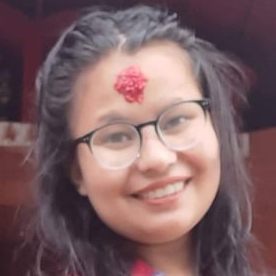National
Karnali schools struggle with chronic teacher shortages
From remote areas to urban centres in the province, the shortage of qualified subject-specific teachers continues to affect schools and students.
Tripti Shahi
Araniko Technical Secondary School in ward 3 of Kaike Rural Municipality in Dolpa, a remote mountain district in Karnali Province, has yet to find a secondary-level English teacher, despite advertised the position twice.
“We have been searching for an English teacher for the past four months,” said Govinda Gharti, the headmaster. “We managed to hire teachers for science and computer, but the English teacher position remains vacant.”
Meanwhile, a basic-level teacher has been teaching English for secondary-level students due to the shortage of subject-specific teachers. Gharti admits that the learning/teaching has been hugely affected as the school administration is unable to find an English teacher.
Dasharath Secondary School in ward 2 of Thantikandh Rural Municipality in Dailekh district had received a grant from the local unit for the appointment of science and math teachers last year. Despite announcing vacancies three times, the school has yet to find suitable candidates.
While the federal government provided a math teacher for the current academic year, which began in mid-April, the school is still searching for a science teacher, said Amar Bahadur Shahi, headmaster at Dasharath Secondary School. According to him, the school has recently published another advertisement for the science teacher post.
Teacher shortages are a widespread issue, affecting not just community schools in remote areas, but also educational institutions in more accessible regions. Jananamuna Secondary School in Birendranagar, headquarters of Karnali Province, established in 1952, stands out as a model school. It draws students from various backgrounds due to its strong academic results, exemplary extra-curricular activities and supportive learning environment. Yet, despite its reputation, the school has struggled to fill teaching positions for the past six months.
The school published vacancy announcements three times in a local newspaper for basic level math and science teachers, but there have been no takers.
“Birendranagar Municipality provided us a budget to hire three teachers. We managed to fill the Nepali teacher position after a second round of advertisement, but science and math teachers remain elusive,” said Govinda Koirala, chairman of the school management committee.
The shortage of qualified subject teachers in community schools is a perennial problem across the country. Karnali, the country’s remotest province, is apparently the hardest hit by teacher shortage.
“I visited Surkhet and Kathmandu several times in search of a teacher. I even went to some Tarai districts hoping to find a science teacher. We had to struggle for a year to appoint a science teacher,” said Umesh Bista, chairman of the school management committee of Naraharinath-based Mangalasaini Secondary School in Kalikot district.
“It is quite difficult to find teachers, mainly for science and math. Even if we do find candidates, they refuse to serve in the rural areas of hill and mountain districts. This situation is likely to worsen. The government needs to address this issue promptly and develop appropriate plans and policies,” said Bista.
There are a total of 2,983 community schools in Karnali Province. Many schools have a shortage of subject-specific teachers. Finding qualified science teachers for the secondary level is quite challenging. “Science graduates have various opportunities so they are often reluctant to pursue teaching careers. And they can earn significantly more by offering private tuition,” said Koirala, who is also the Karnali province coordinator of the community school management committee.
As per the data available at education planning, data and research branch of Social Development Ministry of Karnali Province, there are a total of 626,010 students enrolled in community schools in the province. Of the 8,793 primary teacher positions, 644 are currently vacant. Similarly, 2,699 posts in lower secondary and 1,749 in secondary levels remain unfilled in the province.
“There are some schools with either no teachers or no students. Some schools have too few teacher posts despite having many students, while others have more teachers than necessary. One major reason for the teacher shortage is the misalignment between teacher posts and the number of students,” said Balbir Sunar, section officer at the education planning, data and research branch. He recommends adjusting teacher posts to match the number of students at each school.




 14.12°C Kathmandu
14.12°C Kathmandu













%20(1).jpg&w=300&height=200)

